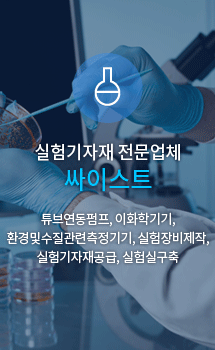안내사항 |
현재 홈페이지에 등록된 제품들은 재고 유무와 관계없이 구입이 가능하며, 별도문의의 상품인 경우 반드시 유선상 확인 후 구매부탁드립니다.
납기가 표기된 상품의 경우 일반적인 수입진행에 소요되는 기간이며, 상품에 따라 납기일정이 추가 될 수 있으니 참고부탁드립니다. |
Silicon Dioxide Nanoparticles (SiO2)
이산화규소 나노파티클
Description
이산화규소 나노파티클 (SiO2)는 규소와 산소로 이루어진 분자로, '실리카'로도 불립니다. 이 두가지 요소는 공명 결합으로 연결되어 있으며, 모래의 주 성분 중 하나로 석영 안에 자연적으로 존재합니다. 일반적으로 흰색 또는 무색이며, 물이나 에탄올에는 불용성입니다. 또한 미네랄과 결합하여 광물 궤도를 형성합니다. 이산화규소 나노파티클(SiO2)는 주로 단백질과 효소에 가장 많이 사용되며, 세포 및 조직을 고정하는 표면으로도 사용됩니다. 나노파티클은 실리카 코어를 중심으로 한 육각형의 와플 결정 구조를 가지고 있습니다. 입자의 음전하 표면은 양전하를 가진 DNA 분자에 자연스럽게 끌립니다. 지구상에서 생명에 필수적인 천연 광물인 이산화규소의 소비는 매우 큰 편입니다. 고유한 기하학적 특성을 가진 나노 구조의 실리카는 다양한 하이브리드 재료와 결합하여 혁신적인 결과를 도출하는 데 도움이 됩니다.
이산화규소 나노파티클(SiO2) 또는 실리카는 많은 생물학적 연구의 기반이 됩니다. 나노 파티클의 입자 형태에 따라 P형과 S형의 분류로 나뉩니다. P형 입자는 S형보다 다량의 미세 기공을 가지고 있으며, 이들의 기공은 0.61ml/g으로 UV 반사율 또한 높습니다. S형은 표면적이 상당히 작습니다.
Silicon Dioxide (SiO2) is a molecule made from Silicon and Oxygen, sometimes known as Silica, and the components are held together by a covalent connection. It is one of the sand’s constituents and is present naturally in Quartz. It is typically white or colourless, insoluble in water or ethanol. It produces the silicate family by combining with minerals. Silicon Dioxide nanoparticles or Silica nanoparticles as a substrate are most common for proteins and enzymes and as a modified surface to immobilize cells and tissue. Surrounding a central Silica core, the nanoparticles have a unique hexagonal “waffle-iron” crystal structure. The negatively-charged surface of the particles is naturally attracted to positively-charged DNA molecules. The consumption of Silicon Dioxide as a natural mineral necessary for life on earth is vast. The nanostructured Silica with unique geometric properties forms biomaterials conjugates with various hybrid nanomaterials. It helps produce innovative results for sensing and imaging DNA.
The Silicon Dioxide nanopowder, also known as Silica nanoparticles or nano-silica, is the foundation for much biological research. According to their structure, the classification of nano-silica particles includes P-type or S-type. Compared to the S-type, the P-type particles feature numerous nanopores with a pore rate of 0.61 ml/g and higher UV reflectivity. The latter also has a significantly smaller surface area.
Reaction
이산화규소 나노파티클의 화학식은 SiO2이며, 물과 반응하지 않고 산에 강합니다. 실리콘 산화물은 산성 유리 산화물의 한 분류로 온도가 올라가면 알칼리 및 염기성 산화물과 상호 작용하여 초음속 핵융합을 생성합니다. 이것은 유리산화물이 우수한 유전체임을 나타냅니다. 이러한 이산화규소 파티클은 수용액의 대기온도에서 매우 안정적이며, Phosphate-buffered Saline(PBS)과 같은 일반적인 생물학적 버퍼에 쉽게 맞춰질 수 있습니다.
Silicon Dioxide nanopowder does not react with water and is acid-resistant. The substance’s chemical formula is SiO2. Silicon oxide, the group of acidic glass-forming oxides, interacts with alkalis and basic oxides as temperature rises, generating a supersonic fusion, indicating that glass is an excellent dielectric. The Chemical Co-Precipitation technique creates the suspension of nanoparticles. At ambient temperature, these Silica nanoparticles are ultra-stable in aqueous solutions and may be easily tailored to typical biological buffers such as phosphate-buffered saline (PBS).
Analysis
저희 분석용 등급의 비기능화된 이산화규소 나노파티클(SiO2)는 여러 과학적 응용에 적합합니다. 예를 들어, 100 nm의 이산화규소 나노파티클(SiO2)는 응집 실험 및 콜로이드 특성 연구에 주로 사용됩니다. 한편, 비기능화된 실리카 나노입자는 화학적 침전 및 다른 생물학적 응용에 탁월한 성능을 발휘합니다. 또한, 많은 응용 분야에서는 실리카 나노입자의 초정밀한 크기 분포를 참조로 활용하고 있습니다.
Our analytical-grade non-functionalized SiO2 nanoparticles are suitable for many scientific applications. For example, 100 nm Silicon Dioxide (Silica) nanoparticles are standard for aggregation tests and colloidal behaviour research. In contrast, non-functionalized Silica nanoparticles are excellent for chemical deposition and other biological applications. Many applications rely on Silica nanoparticles with ultra-narrow size distributions as a size reference.
Properties of Silicon Dioxide Nanoparticles
· 하얀색 반투명한 가루 형태의 입자입니다.
· 밀도 : 2634 kg/m3
· 질량 : 60.0843 g/mol
· 표면온도 : 1986 / 끓는 온도 : 2503
· 수정 구조로는 Quartz, cristobalite, tridymite가 있습니다.
· 농도 : 0.1%~5%
· 입자의 분포가 매우 좁아 단일 분산이며, 변동 계수(CV) 3%미만
· 입자각 0.980 이상으로, 입자들이 밀도 높고 매끄럽게 형성
· Stöber방법을 바탕으로 한 sol-gel 공정에 의해 제조되어, 고품질/저비용/준비시간 단축이 특징입니다.
· It is a white powdery particle.
· It is translucent and has a density of 2634 kg/m3.
· It has a molar mass of 60.0843 g/mol.
· The surface temperature is 1986 °K, whereas the boiling temperature is 2503 °K.
· Quartz, cristobalite, and tridymite are crystal structures.
· It is manufactured in various concentrations ranging from 0.1% to 5%.
· Highly monodisperse: the particle size distribution is narrow, CV< 3%.
· Roundness > 0.980: particles pack well to form a dense and smooth powder.
· They are prepared by the sol-gel process based Stöber method: high quality, low cost, short preparation time.
· Surface chemistry: Hydroxyl (-OH): chemically stable in many environments
Applications of Silicon Dioxide Nanoparticles
이산화규소 나노파티클(SiO2)는 음식 첨가물로 사용되는 등 다양한 산업 분야에서 활용됩니다. 음료 청탁제, Anti-binder, 점성 조절제, 방풍제, 건조제, 그리고 약물 및 비타민 첨가제로도 사용됩니다. 또한 이산화규소 나노파티클(SiO2)는 DNA 및 유전정보를 포함하는 nucleic acid을 감지하는 데 널리 사용됩니다. 이 분말은 PCR(polymerase chain reaction) 등의 다양한 기술에서 손상된 DNA 부분을 증폭하는 데 유용하게 사용됩니다. 이에 연구자들은 특정 표지자를 가진 세포를 분리하기 위해 세포 분리기에서 이산화규소 나노파티클(SiO2)를 활용합니다.
이산화규소 나노파티클(SiO2)는 고무와 플라스틱 첨가제로도 사용되어 콘크리트 및 기타 건축재료의 강도를 높이는 필러로 사용됩니다. 또한 의약품 투여 및 치료 진단과 같은 생체 응용 분야에서 안정적이고 독성이 없는 플랫폼으로도 사용됩니다. 비록 미량 원소는 아니지만 규산(Si)의 추가는 식물의 성장과 생산을 촉진하며 생물 빛 비생물적 스트레스 인자에 대한 내성을 향상시킵니다. 이산화규소 나노입자(SiO2)는 탁월한 화학성 순도와 분산성을 갖추고 있으며, 초 미립자 크기와 고열 저항성을 가지고 있어 현재 가장 흥미롭고 새로운 무기물 첨가제 중 하나로 주목받고 있습니다.
Silicon Dioxide (SiO2) has a variety of industrial applications, including its use as a food ingredient. It serves as a beverage clarifier, anti-binder, viscosity controller, anti-foaming agent, desiccant, and pharmaceutical and vitamin excipient. Silicon Dioxide nanopowder is common for detecting DNA and the nucleic acid that contains genetic information. It proves beneficial in different techniques like PCR (polymerase chain reaction) to amplify only incomplete or damaged DNA strands. Moreover, researchers utilize the powder in cytometry flow to isolate cells with specific markers.
The utilization of SiO2 nanoparticles is famous as a rubber and plastic additive, strengthening filler for concrete and other building composites, and a stable, non-toxic platform for biomedical applications such as drug administration and theranostics. Although it is not a micronutrient, Silicon (Si) identification has been beneficial for plants due to its favourable effects on plant development and production and tolerance to biotic and abiotic stress factors. It has enhanced surface adsorption and energy properties, excellent chemical purity, excellent dispersion, ultrafine molecule size, and high thermal resistance. Silicon Dioxide nanoparticles (SiO2 NPs) are presently being probed as one of the most interesting new inorganic accoutrements.












